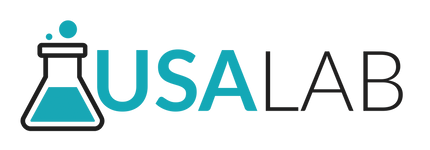HOW TO MAINTAIN LABORATORY EQUIPMENT
Whether you are a seasoned laboratory dweller or have just begun your scientific journey, it is imperative to understand that how you maintain your laboratory and its equipment is just as important as the work that takes place in the lab. Why? With spotless workstations and properly maintained equipment, you lessen the risk of cross-contamination and unnecessary injuries. On the contrary, when a lab is unkempt and its equipment is neglected, you forgo your safety and the safety of those around you, deny yourself of accurate experiment results, and will most likely have to repeatedly perform repairs on your equipment. You may even have to purchase new units altogether. However, all it takes to avoid these issues are the proper handling and care of your laboratory and its apparatuses.
The Basics
Let’s start with the basics of how to maintain laboratory equipment and clean your workspace. Start by carrying out a daily wipe down of all surfaces and equipment exteriors. In addition to the sanitation of these surfaces, this will help eliminate any dust or residue buildup. Any equipment that is used on a frequent basis, such as microscopes, should be regularly deep cleaned using a 70:30 mixture of ether and alcohol to ensure they are clean enough to yield accurate results. Lastly, consider outsourcing the cleaning of any challenging instruments to a qualified professional. By following this simple lab space and equipment cleaning procedure on a frequent basis, you can effectively eliminate any potential issues that might have occurred in a messy setting, and instead create a space that is in peak condition.
Calibration & Repairs
The next part of your maintenance routine should include regularly calibrating equipment and taking care of any lingering repairs. Just as an unkempt lab can cause a number of inaccuracies, so too can uncalibrated equipment result in misleading data. Proper calibration can even improve safety conditions if the equipment due for maintenance is used for measuring hazardous chemicals. To track which instruments need calibration and repair, keep an inventory of your equipment and take note of each time they receive an adjustment.
Refurbishment
From time to time, you may benefit from refurbishing any equipment that shows signs of performance degeneration. To refurbish the unit, start by taking it apart and fully cleaning each component. Polish components where necessary, and re-lubricate any moving parts. If there are parts that show signs of wear and tear, consider replacing them with high-quality replacement parts. Then, put the unit back together and resume operations.
Lab Cleaning Checklist
How to maintain your laboratory and its equipment in eight steps:
- Basic daily surface and equipment cleaning
- Ensure condition and quality of personal protective equipment
- Clean and restock handwashing stations
- Ensure emergency stations are maintained in accordance with regulations
- Inventory refrigerator and freezer contents
- Properly dispose of any broken materials
- Inspect emergency equipment
- Ensure hazardous materials are stored properly
